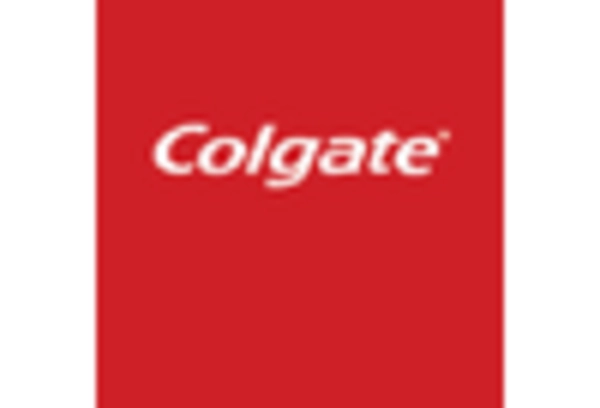Increased Stress Levels
The GCC region has witnessed a notable rise in stress levels due to various socio-economic factors, which appears to be a key driver for the sleeping bruxism-treatment market. Stress is widely recognized as a significant contributor to bruxism, leading to increased grinding and clenching of teeth during sleep. As mental health awareness grows, individuals are more likely to seek solutions for stress management, which may include treatments for bruxism. This trend suggests a potential increase in the market, with estimates indicating a growth rate of approximately 4% annually. Consequently, the correlation between stress and bruxism is likely to propel the sleeping bruxism-treatment market forward as more people recognize the need for effective interventions.
Growing Awareness of Oral Health
The rising awareness of oral health and its impact on overall well-being is influencing the sleeping bruxism-treatment market. Public health campaigns and educational initiatives are increasingly emphasizing the importance of maintaining good oral hygiene and addressing issues like bruxism. As individuals become more informed about the potential consequences of untreated bruxism, such as tooth wear and jaw pain, they are more inclined to seek treatment. This heightened awareness is expected to drive market growth, with projections indicating a potential increase in demand for treatment options by 6% in the coming years. Additionally, dental professionals are playing a pivotal role in educating patients about bruxism, further contributing to the expansion of the sleeping bruxism-treatment market.
Advancements in Dental Technology
Technological advancements in dental care are transforming the sleeping bruxism-treatment market. Innovations such as custom-fitted night guards and biofeedback devices are becoming increasingly accessible to consumers. These advancements not only enhance the effectiveness of treatments but also improve patient compliance. For instance, the introduction of 3D printing technology has streamlined the production of dental appliances, reducing costs and wait times. As a result, the market is expected to witness a surge in demand for these high-tech solutions. Furthermore, the integration of telehealth services allows patients to consult with dental professionals remotely, broadening access to treatment options. This technological evolution is likely to drive market growth, with estimates suggesting a potential increase in market size by 7% over the next few years.
Expansion of Dental Care Services
The expansion of dental care services in the GCC region is likely to bolster the sleeping bruxism-treatment market. With an increasing number of dental clinics and specialized practices, access to treatment options is improving. This growth in dental infrastructure is accompanied by a rise in the number of trained professionals who can diagnose and treat bruxism effectively. As more individuals gain access to dental care, the likelihood of early detection and intervention increases, potentially leading to a larger patient base seeking treatment. Market analysts suggest that this expansion could result in a market growth rate of around 5% over the next few years. Therefore, the enhancement of dental care services is poised to play a vital role in the evolution of the sleeping bruxism-treatment market.
Rising Incidence of Sleep Disorders
The increasing prevalence of sleep disorders in the GCC region appears to be a significant driver for the sleeping bruxism-treatment market. Studies indicate that approximately 30% of the population experiences some form of sleep-related issues, which may contribute to bruxism. As awareness of the connection between sleep disorders and bruxism grows, more individuals are likely to seek treatment options. This trend suggests a potential increase in demand for various therapeutic solutions, including dental devices and behavioral therapies. The market is projected to expand as healthcare providers recognize the need for effective interventions, potentially leading to a market growth rate of around 5% annually. Consequently, the rising incidence of sleep disorders is likely to play a crucial role in shaping the sleeping bruxism-treatment market in the GCC.

















Leave a Comment